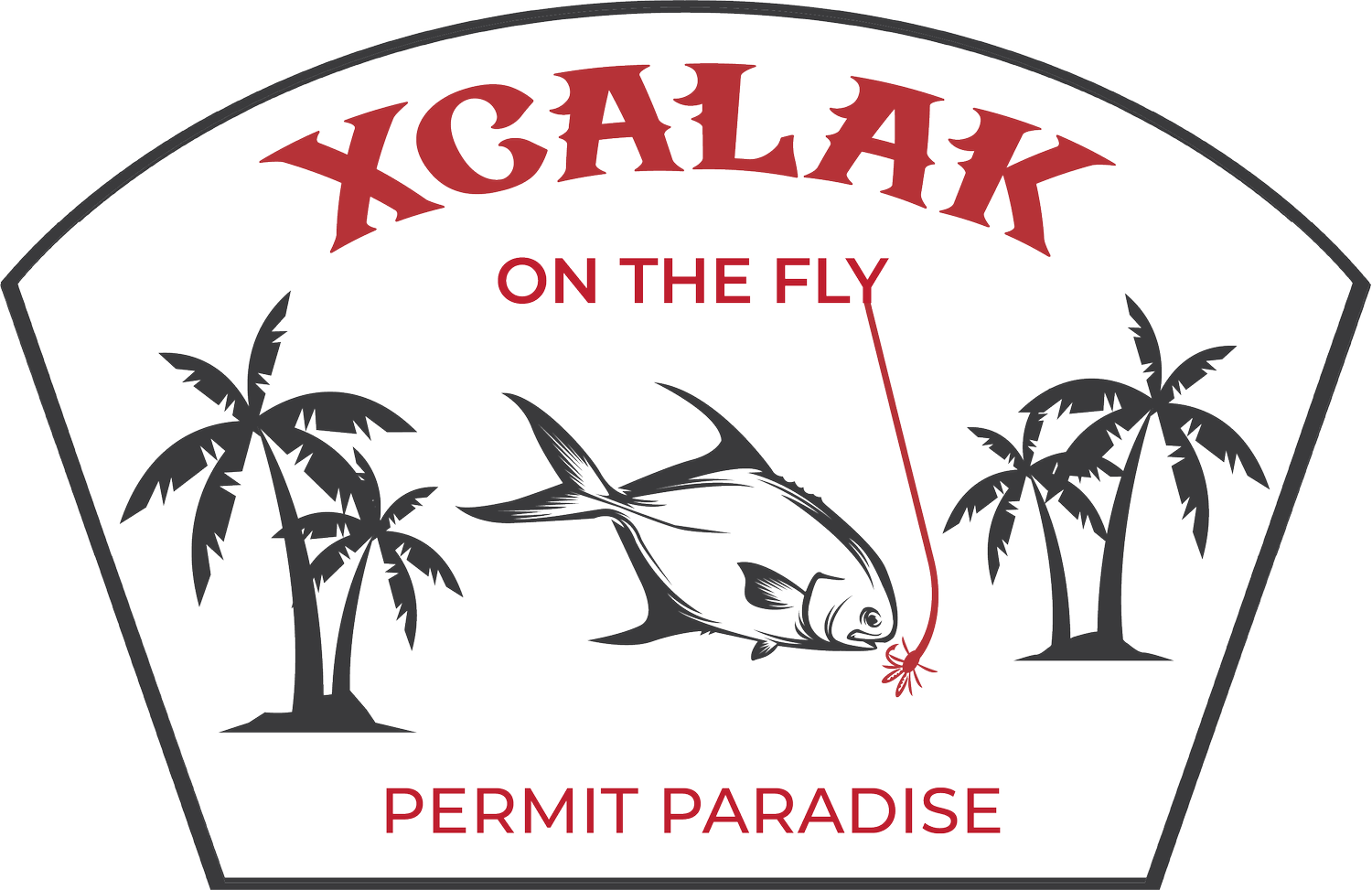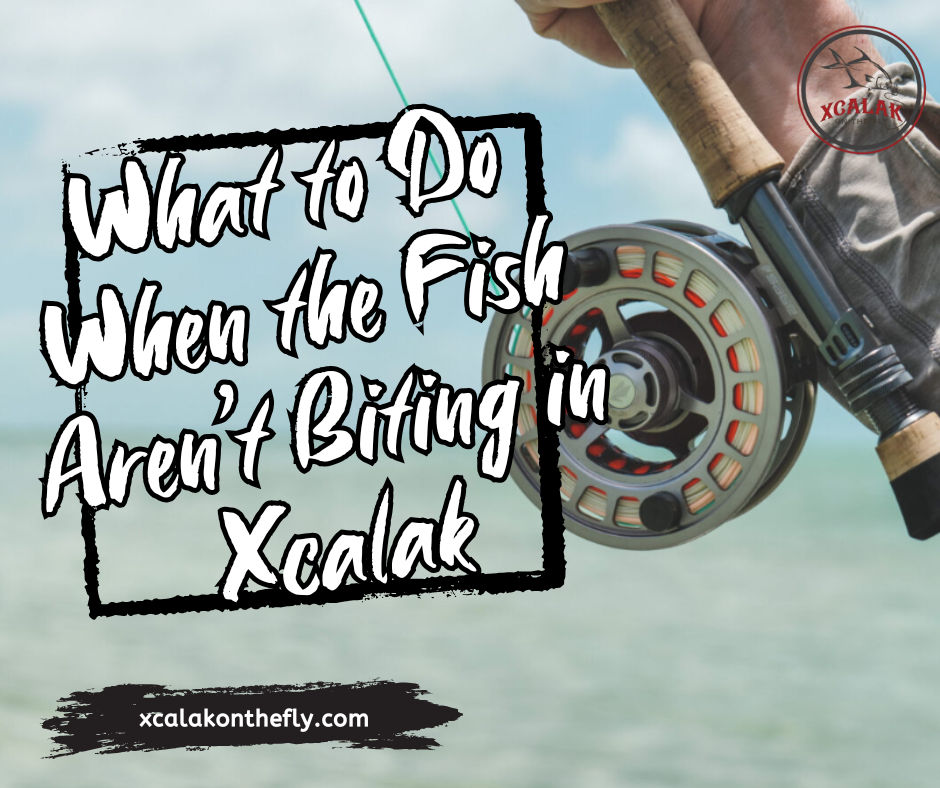Every angler who’s been to Xcalak, Mexico knows the highs and lows. One day, the Caribbean flats feel alive with bonefish, permit, and tarpon rolling through every pocket. The next day, the weather shifts, the tide slows, and the fish vanish like smoke. You’re left standing on a white sand flat, questioning your fly choice, your cast, and maybe even your life decisions.
But here’s the truth: a slow day of fly fishing in Xcalak is still better than most anywhere else. The key is knowing how to roll with it.
Slow Down and Read the Water
When the bite shuts off, frustration comes easy. But often in Xcalak fly fishing, the answer is to slow down. Walk the flats without rushing. Study the water for clues – mullet schools moving, rays kicking up mud, nervous water tight to the mangroves. These details tell the story of what’s happening beneath the surface. Many times, the fish are still there, just not flashing their cards. Patience on these Caribbean flats can be as valuable as your casting arm.
Switch Flies and Change Presentation
When fish turn finicky, it doesn’t always mean they’re gone, it might just mean you’re showing them the wrong thing. Permit fishing in Xcalak and even the bonefish here are notorious for ignoring the same fly they inhaled yesterday. That’s when it pays to downsize your fly, lighten your tippet, or slow your strip. Some of the best fish in southern Mexico fly fishing trips are caught by anglers who adjusted instead of stubbornly sticking to one play.
Chase the Other Opportunities
If the permit aren’t on the flats, it doesn’t mean the day’s lost. Xcalak sportfishing has options. Slip into the back lagoons for snook lurking under the mangroves, probe the channels where tarpon roll, or take a shot at barracuda on the reef edge. Flexibility pays here. This fishery rewards anglers willing to change gears.
Dive Beneath the Surface
Fishing might be the draw, but Xcalak offers more than fly fishing. On a slow stretch, grab a mask and snorkel the reef. You’ll drift with parrotfish schools, maybe spot an eagle ray or a sea turtle cruising past coral heads. It’s a reminder of why this fishery is so alive and why it’s worth protecting. Stepping off the skiff and into the water also clears your head, letting you climb back onboard with fresh eyes and patience.
Lean Into the Culture
When the weather won’t cooperate, lean into the local Xcalak culture. Walk the sandy streets, grab tacos from a roadside stand, or share a cold cerveza with your guide. Ask about the history of the town, or listen to stories of fish that got away. Those connections often stick with you just as much as the fish.
Remember Why You’re Here
Fly fishing in Xcalak isn’t about a guaranteed tally at the end of the day – it’s about stepping into one of the last wild corners of the Caribbean and testing yourself against some of the most selective fish in the world. Slow days are part of the story. They make the victories sharper and the memories longer-lasting.
And here’s where your guide comes in. The best fly fishing guides know when to change flies, when to shift to a new flat, and when to call an audible and chase snook in the mangroves. They’re reading the tides, the wind, and the water in ways most anglers never could. On the days when the bite isn’t easy, they’re the ones who turn frustration into opportunity. Trust their eyes, lean into their experience, and you’ll make the most of every day on these flats—no matter what the fish decide.
Ready to experience Xcalak? Book your trip with Xcalak on the Fly and let expert guides help you chase bonefish, permit, and tarpon on one of the last untouched Caribbean fly fishing destinations.

